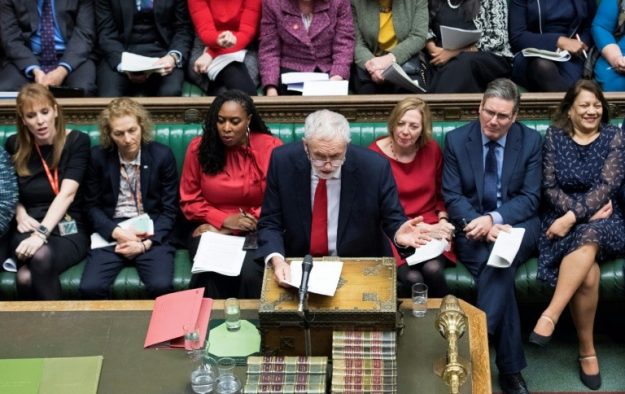Parliament rejected by 325 votes against 306 the vote of no confidence against the British Prime Minister, Theresa May, who must now find a plan B to reach Brexit.
British Prime Minister Theresa May, having narrowly survived a motion of no confidence, is due to return on Thursday 17th January to the difficult task assigned to her: to save Brexit.
It is by 325 votes against 306, a margin of only 19 votes, that the deputies rejected Wednesday the motion of censure . It was the first against a British government in 26 years.
The day before, the House of Commons had much more openly rejected, by 432 votes to 202, the agreement negotiated with Brussels to remove the United Kingdom from the European Union.
ALSO READ: Brexit: Theresa May’s debacle after the rejection of the agreement by British MPs
Plan B
Place now for a “Plan B”, which according to the British press is hard to distinguish.
“The next step for the government should be to consult the authors of alternative plans for the Brexit and present them to Parliament as a menu among which to choose,” said Thursday the Guardian (center left).
“After two and a half years, plan B is to let Parliament take control. At least it’s a plan. But is Parliament able to have results in line with the result of the referendum, or is it the beginning of a great betrayal of the popular vote? Wondered the Daily Telegraph (Conservative).
“Theresa. May has to show that she is willing to make concessions. If she is sincere in her desire to move forward, she also needs to show a little humility and realism about her authority chipped,” said the Daily Mirror.
Determined to “continue the work” and implement the result of the referendum of June 2016, during which the British had voted 52% to leave the European Union, the Prime Minister began Wednesday evening a series of discussions with the opposition in a “constructive spirit”.
She met with several leaders, with the notable exception of labor leader and leading opposition party Jeremy Corbyn. The latter has declined the invitation as long as the government does not rule out the “catastrophic” possibility of an exit from the EU without agreement.
“Now is the time to put our personal interests aside,” Theresa May said in the evening in front of Downing Street, after meeting with the leader of the Liberal Democrats, the leader of the Scottish Nationalists of the SNP in Parliament and the leader of the Welsh nationalist party Plaid Cymru.

“Disappointed” that Jeremy Corbyn refused the dialogue, she said her door was “open”. Discussions restart Thursday.
“These cross-party discussions can not relate to cosmetic changes to this agreement, which has already been rejected. We need to discuss real alternatives and a second referendum must be on the table, “tweeted the leader of the Scottish Nationalists of the SNP in Parliament, Ian Blackford, after meeting with the head of the government.
The SNP, like the Liberal Democratic Party, the Welsh national party Plaid Cymru and the Greens are calling for a second referendum, urging Labor opposition leader Jeremy Corbyn to fully support this option.
Jeremy Corbyn had favored the scenario of early elections, while keeping “all options open”, including a new popular consultation.
Brexiters support
His hopes did not materialise: the hundred or so deputies from Theresa May’s conservative camp who voted against the Brexit deal on Tuesday, contributing to her humiliating defeat, this time clashed behind their leader.
His ally, the small unionist party Northern Ireland DUP (ten deputies), which ensures an absolute majority in Parliament, kept alive the government. But Theresa May must now “learn the lessons” from rejecting her text in Parliament, warned DUP MP Nigel Dodds.
The DUP wants to see the “backstop” in the withdrawal agreement, which it accuses of threatening the political and economic integrity of the United Kingdom, disappear.
This option of last resort provides for the establishment of a customs union between the United Kingdom and the EU to avoid the reestablishment of a physical border between Ireland and the British province of Northern Ireland, if no other solution is found after the transition period, which is expected to last until the end of 2020. Many UK MPs fear that this will keep their country in the EU indefinitely.
Brexit report?
Faced with a seemingly inextricable situation, Theresa May has until Monday to propose a “Plan B”. It could try to return to negotiate with EU leaders, but they have so far repeated that the agreement reached in November after 17 months of difficult negotiations was the only one on the table.
To progress in the discussions, Theresa May could be forced to return to the “red lines” she has even drawn. In particular, it had failed to respect the conditions for access to the European single market, which included the free movement of persons, and had demanded full commercial freedom.
It could also request a postponement of the UK’s exit date from the EU, set for the 29th March 2019, which it has ruled out so far.
There is “still time to negotiate,” said German Chancellor Angela Merkel, calling Theresa May to make proposals.




